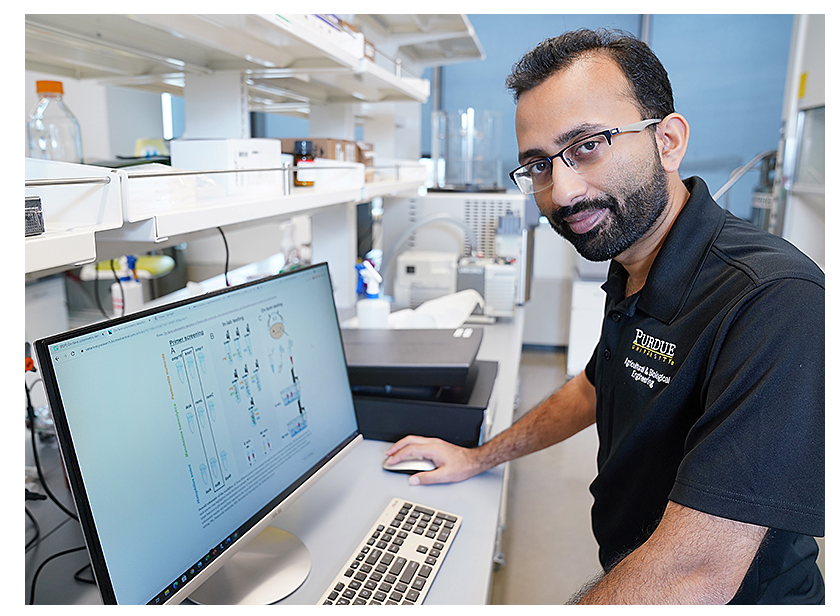Pen-Side Test for BRD Under Development

With the quick swab of a bovine nose veterinarians and producers will soon be able to determine whether a specific animal is infected by bovine respiratory disease (BRD).
The test, which can be administered pen-side, is under development by Mohit Verma, a Purdue University professor of agricultural and biological engineering, and a team of researchers.
Test results can be determined in roughly an hour, he reports.
Verma says the test can identify three strains of bacteria that contribute to BRD: Pasteurella multocida, Mannheimia haemolytica and Histophilus somni.
An assay is heated in a water bath to enable the chemical reactions required to determine the presence of the bacteria. If any of the three bacteria is present, the assay changes color from red to yellow.
The technology tests for DNA from the bacteria and uses a method of nucleic acid amplification called loop-mediated isothermal amplification, or LAMP, according to an article developed by university writer, Elizabeth Gardner. When the bacterial DNA is present, LAMP amplifies it. As the level of nucleic acid increases, it changes the pH of the assay, which triggers the color change.

The advantage of LAMP over other methods is that it does not require extraction and processing of the samples, which can be lengthy and expensive, Verma says. Its results matched those from a polymerase chain reaction, or PCR, test between 60% and100% of the time.
This year, Verma says he is putting the technology in the hands of veterinarians and farmers to develop paper test strips.
The strips could include multiple assays, such that one strip could identify the presence of several different pathogens, according to the article. The research team also plans to apply the same approach to tests for other infectious diseases in cows and pigs, and to investigate the potential for detecting food contamination.
A paper detailing the work was published in the journal Veterinary Research on October 2, 2021. It is available for review at https://bit.ly/3guDb5b







